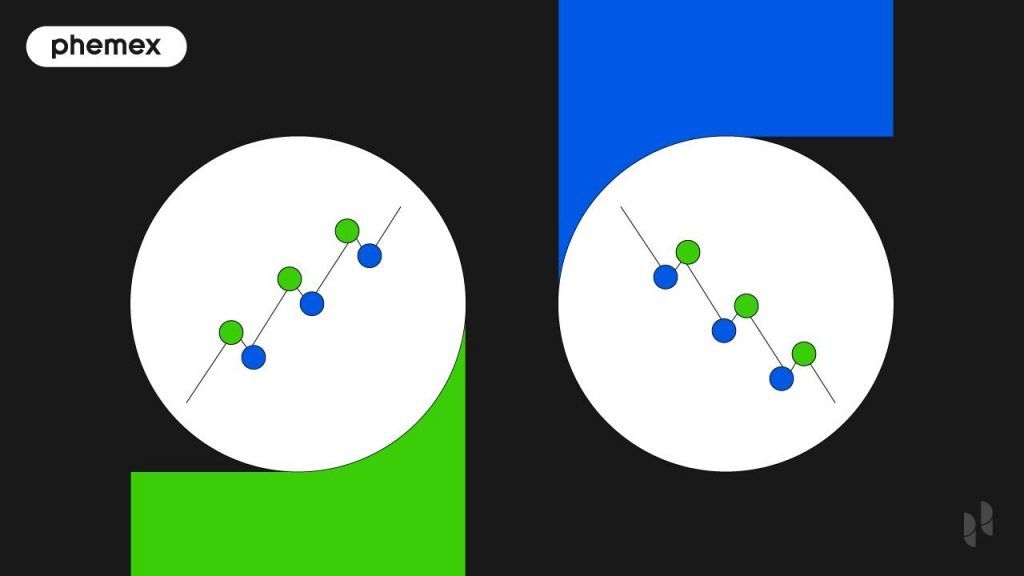Summary:
- True Strength Index (TSI) is a momentum oscillator that can be used for different types of trading including cross trading, trend trading, and divergence trading.
- It should not be confused with the Trend Strength Index, which uses only one EMA while the True Strength Index uses three EMAs (13-period EMA, 15-period EMA, and 25-period EMA.)
- The True Strength Index is slower, but more accurate for predicting long-term trends.

What Is The True Strength Index (TSI)?
The True Strength Index (TSI) is a technical momentum oscillator used for trend trading, crossover trading, divergence, and overbought/oversold signals. The TSI oscillator moves along a center trend line into positive and negative territory. The indicator can be used for long-term value investing or short-term day trading.
The True Strength Index indicator is based on the Exponential Moving Average (EMA). EMA is a moving average that places weight on recent prices. The indicator uses three EMAs–two 13-period EMAs and a single 25-period EMA. The EMAs are smoothened to create a price direction that syncs with the current market trend. The second 13-period EMA and 25-period EMA are used for smoothening. It is similar to the Relative Strength Index (RSI), but the double-smoothening makes it less sensitive.
The True Strength Index should not be confused with the “Trend Strength Index”, a different indicator bearing the same symbol–TSI. Both indicators are based on the EMA, but the Trend Strength Index only uses one EMA as a basis for the oscillator while the True Strength Index uses three EMAs.
The Trend Strength Index does not use smoothening, which makes it more volatile, reaching overbought and oversold levels faster. The True Strength Index is slower, but more accurate for predicting long-term trends.
What Is The True Strength Index Formula?
The True Strength Index formula uses EMA-derived closing prices and absolute closing prices. Here’s how to calculate the True Strength Index:

The “PCDS” value stands for “Price Close Double Smoothed”. The “APCDS” stands for “Absolute Price Close Double Smoothed”. These are Exponential Moving Indicator values for the recent price closes, as the EMA places weight on recent data. There are no closing times in the crypto markets as crypto trading goes on 24/7. The EMA averages are based on prices that reset at 00:00 UTC each day.
To calculate the TSI formula manually, we have to do the following:
- Measure the change between today’s closing price and yesterday’s closing price.
- Measure an EMA over 25-periods (i.e. 25 days) based on the difference found.
- Measure an EMA over 13-periods for the 25-period EMA.
- Multiply the result by 100.
The output of this equation is a number that can be positive or negative. If the number is positive, the indicator oscillates in positive territory and if the number is negative, it oscillates in negative territory.
How to Use True Strength Index?
- Let’s try setting up the TSI indicator using the Phemex app. Head to the “Markets” and select one of hundreds of trading pairs. For this demonstration, we chose the BTC/USDT pair.
- Select the 1D (daily) for accurate signals and click on “Indicators” at the top:

- The daily chart is recommended because the EMA derives data based on recent price averages. On the “Indicators” menu, search for “True Strength Indicator”:

- Left-click on it and you will see it appear underneath the candles in a new box:

- The best settings for True Strength indicator will differ based on your trading strategy. Leave the default settings for day trading or extend the EMAs to 50 or 100 by clicking on “Settings” and changing the length:

You’re now ready to trade with the True Strength Index indicator!

How to Read the True Strength Index (TSI)?
To read the TSI indicator, focus on the zero line in the middle. The zero line is the middle line between positive and negative territory that identifies the range. The top range limit is identified as +0.5 and the bottom range limit is identified as -0.5. The indicator line is currently oscillating at -0.1 which indicates bearish/negative momentum:

If the TSI line descends to the lower support levels of the range, this indicates oversold levels. If the line ascends to the upper resistance levels of the range, it indicates overbought levels. However, Bicoin being oversold does not mean it’s time to buy immediately–wait for a trend reversal before acting.
How to Trade With the True Strength Index Indicator?
True Strength Index trading is versatile because the indicator can be used for various trading strategies such as crossover, divergence, and trend. Crossover trading is based on the crossing of two EMAs on the chart while trend trading is based on overbought and oversold levels that indicate support and resistance. Divergence is when the price goes in the opposite direction of the indicator.
Let’s analyze them in action.
Using TSI for Trend Trading
Trend trading has two dominant trends: Bullish and bearish. A bullish trend is an uptrend where the price appreciates and a bearish trend is a downtrend where the price depreciates. A trader can long trade by buying at the start of a bullish trend or a short trade by selling at the start of a bearish trend:

The indicator oscillates above or below a zero line. If it goes below the zero line, it is bearish and if it goes above the zero line it is bullish. We can see that once the TSI indicator hit lower oversold levels, the trend reversed and the Bitcoin price went from $44,000 to $47,000 on the 1H (hourly) chart.
To use the True Strength Indicator for intraday trading, buy when the value reaches the lower support levels (oversold) or sell when it reaches the upper resistance levels (overbought). Make sure the trend reverses before you enter the trade. If you buy at the lower levels, wait for the indicator to change course and start ascending first.
Using TSI for Crossover Trading
The True Strength Index TSI indicator has three EMAs: 13-period, 13-period, and 25-period. We can open a long trade if the 25-period EMA (blue line) goes above the 13-period EMA (red line) or a short trade if the opposite happens:

An effective crossover strategy involves placing buy and sell trades once the two lines cross. We can see that when the red line crossed the blue line, Bitcoin broke down from $44,000 to $36,000. The trend reversed when the blue line crossed above the red line and Bitcoin rose from $37,000 to $46,000.
Using TSI for Divergence Trading
The divergence True Strength Index strategy is recommended for professional traders with high observation skills. Divergence occurs when the TSI indicator oscillates opposite of the current price. This indicates that the price will diverge in the opposite direction. Here’s how that we can spot divergence:

Divergence is not a common occurrence because the indicator trails behind the price more than 95% of the time, hence it requires special attention to detail. In this case, the price went up to $69,000 while the TSI indicator declined. This was followed by depreciation over the next few months.
Indicators such as TSI are based on the EMA which weighs in on volume. If the increase in price is not matched by these metrics, the price rally cannot be sustained and the price is bound to diverge. A trader could open a short trade using the example above and profit on a pullback from the high $60,000s to the low $40,000s.
True Strength Index vs Trend Strength Index: What Is the Difference?
The “True Strength Index” and “Trend Strength Index” are two unique indicators. Both indicators use the symbol “TSI” which can be confusing because they output different values. However, they are both based on an Exponential Moving Average. The True Strength Index is a bit more advanced because it’s based on multiple EMAs.
The indicators can be used simultaneously on Phemex:

The main difference is that the Trend Strength Index uses one EMA without smoothening. This makes it sensitive and it goes from overbought to oversold fast. Moreover, the indicator can only be used to identify the strength of the current trend, whereas the True Strength can be used for crossover and divergence trading strategies due to its triple-EMA setup.
Conclusion
The True Strength Index (TSI) is a versatile indicator that can be used for all popular types of trading. Fundamental investors could use it to identify historic support levels and buy Bitcoin by market timing. A day-trader could use the mentioned divergence and crossover strategies to get buy/sell signals and make profitable trades.
The range-bound oscillator makes it easy to identify overbought and oversold levels for any asset. The indicator was highly accurate for predicting price changes over the last few years and can be combined with the Relative Strength Index (RSI) for additional range-bound information.
To learn more about technical indicators that can be combined with the TSI, visit our technical analysis (TA) section.
Read More
- What is Trend Strength Index (TSI): How To Measure Trend Strength of Bitcoin
- What is RSI: How To Trade Bitcoin With The RSI Indicator
- What Is SMI Ergodic Indicator: Confirm Trends For Risky Trades
- What is TRIX Indicator: The TRIX of the Trade and How to Use Them
- What Is Trend Trading: Following the Market When It Pays
- The TTM Squeeze Indicator: What Is It and How to Use It?
- Stochastic Oscillator: Everything You Need To Know
- Relative Vigor Index (RVI): Measuring Crypto Energy Levels









